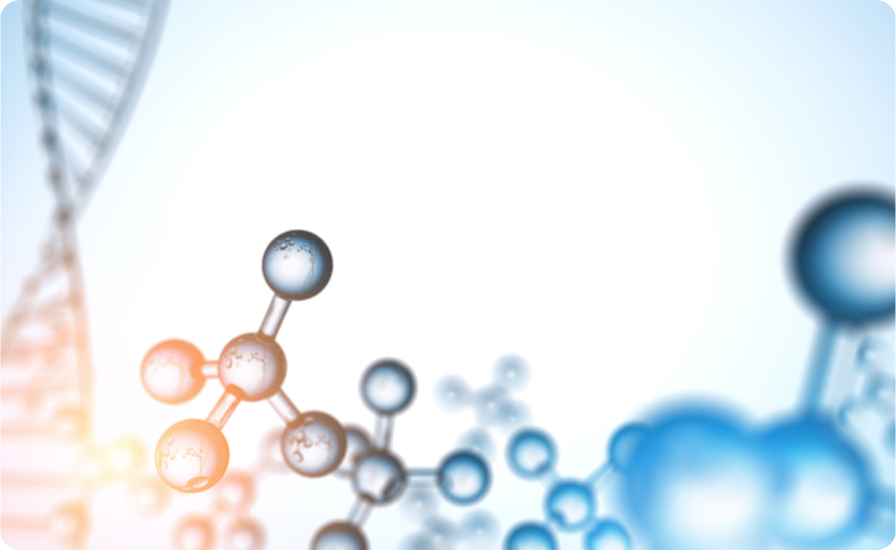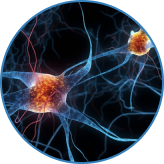Exosome Therapy
Exosomes, their origin, and their purpose in the human body have been studied for over thirty years. Since their discovery in 1983, researchers have become fascinated by these tiny traveling messengers, spurring the formation of several scientific societies dedicated to the study of exosome biology. The term extracellular vesicles (EVs) is also used to describe exosomes, and today these tiny messengers are being harnessed for use in treating many different conditions.

Exosomes Made Simple
You may be familiar with the term exosome, or you may be asking yourself, “What in the world is an exosome?” The more scientists learn about exosomes, the more they are convinced that they are the key to cracking the code of eliminating diseases that today are considered incurable. Not only that, they may be the “holy-grail” of anti-aging, sort of like a non-mythical version of the fountain of youth.
Exosomes come from stem cells, but they are their own entities and have different capabilities. Exosomes cannot reproduce or make copies of themselves like stem cells can, but their job is very important. These tiny offshoots of stem cells resemble tiny bubbles and travel outside of their parent stem cell to “talk to” other cells. Their communication provides instructions to the new cell that research has shown can reverse disease progression, accelerate and enhance wound healing, and rewind the clock on the effects of aging.
Think of it as the stem cells sending out packages to their relatives (other cells), and these packages are exosomes. Each exosome package contains a variety of different things and instructions on how to use them. Typically, they include microRNA, messenger RNA, sometimes double-stranded DNA, lipoproteins, peptide-like growth factors, and other small molecules, and when they come into contact with a cell, they provide directions to that cell on what they are supposed to do. This means they can pass on both beneficial or harmful information depending on the message they are programmed with.
Every illness scientists have studied shows that exosomes are involved, which would explain how cancer can spread from one location of the body to another. When their communication skills are harnessed for good and not evil, exosomes can be superheroes.
How Are Exosomes Gathered?
Exosomes are extracted from stem cells, and then scientists use a specialized process (ultracentrifugation) to separate the exosomes from their parent stem cells and purify them by stripping out all the DNA, contaminants, and other unwanted elements, leaving the clean, pure exosomes. Scientists can then program them to pass on specific information to the cells located in the area where they are administered.
How Do They Work?
Exosomes that are derived from the strongest type of cells can function like a guided missile when they are programmed and then introduced to a desired location.

Almost every illness or chronic condition’s root cause lies in inflammation, and exosomes can be programmed to seek out inflammation and then communicate with nearby cells, instructing them to go and repair the damage. A huge benefit of exosomes is that they are so small that they can penetrate the blood-brain barrier to treat conditions that affect the neurons in the brain. Currently, there are studies taking place all over the world related to treating diabetes, lupus, brain injury, and over 150 different diseases using exosomes.
Exosome therapy has been used by many different athletes in the NFL and NHL, as well as other sports, to help players recover from stress-related injuries as well as brain injuries.

Exosomes are programmed and equipped to relay and implement the instructions set by their parent stem cells, which can vary greatly depending on their parent’s function. Think of them as tiny construction foremen who possess not only the blueprints for how to build or repair a structure but also everything they need to get the job done.
As we age, so do all the cells in our body, and the production of exosomes slows down. The content within them, like RNA and other key elements, can become significantly reduced, which hinders their ability to communicate as quickly or accurately with their neighbors. The signs begin to show on our faces with wrinkles, thinning skin, etc., and other areas of our bodies can begin to deteriorate, and it can affect cognitive functions as well.
Providing our body with an infusion of exosomes can result in many anti-aging benefits. EVs programmed for skin rejuvenation will be carrying supplies and instructions on repairing wounds, producing collagen and elastin, creating a healthier and more substantial dermis, etc. Exosome therapy is an excellent treatment following a procedure such as microneedling or when an individual is looking for quicker and more complete wound healing.
Contact Us Today To Explore The Possibilities Of Exosome Therapy
Many celebrities and athletes have or are using exosome therapy to enhance their look or help repair damage created by time or injury. The field of exosome therapy continues to advance as scientists learn more about how to harness their power to reverse disease and degeneration.
Ongoing clinical trials are showing great promise and good results in treating a wide range of conditions. Researchers in this field feel confident that exosome therapy is the future of regenerative medicine and the key to combating many of today’s incurable conditions.

